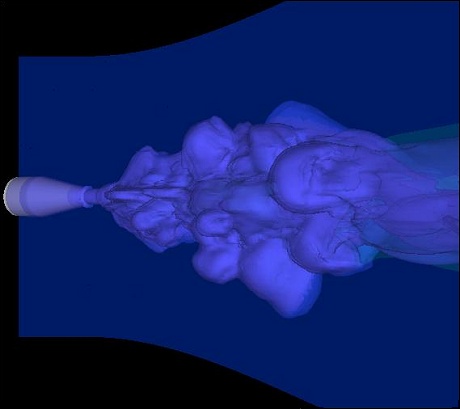 |
JEAN
|
| Coordinator: |
Prof. J. Fitzpatrick, Trinity College jftzptrk@truxa1.tcd.ie |
| Supervisor (Chalmers): |
Lars Davidson lada@chalmers.se |
| Co-supervisor: |
Lars-Erik Eriksson* lee@chalmers.se |
| PhD student: |
Niklas Andersson nian@chalmers.se |
| Cooperation: | Volvo Aero Corp.* |
| Start of project: | February 2001 |
| End of project: | January 2004 |
BACKGROUND Since direct estimation of aerodynamic noise sources in turbulent flows is still exceptional and limited to low Reynolds number flows, hybrid methods are used in Computational Aero-Acoustics (CAA) to interface the aerodynamic and acoustic fields. This is effected by consideration of the physics of the noise generation process and current jet noise prediction methods adopt this approach. Thus, the problem, from a design perspective, is that new concepts cannot be developed without resort to extensive testing and measurement campaigns. The ability to predict the acoustic performance of novel geometries and treatments is limited by our capacity to provide reliable predictions of the flow and turbulence characteristics. CHALMERS' CONTRIBUTION A large-eddy simulation (LES) of a compressible nozzle/jet configuration is studied. Both cold and heated jets are simulated. The Reynolds number based on the jet velocity at the nozzle exit plane and the nozzle diameter is 50 000. The Favre filtered Navier-Stokes equations are solved using a finite volume method with a low dissipative third order upwind scheme for the convective fluxes, a second order centered difference approach for the viscous fluxes and a three-stage second order Runge-Kutta time marching technique. The calculations are performed using a block structured boundary fitted mesh with approximately 3 000 000 cells. The calculations are performed on a parallel computer, using message-passing interface (MPI). In order to diminish disturbances caused by the outlet boundary a buffer layer is added at the domain outlet. Kirchhoff surface integration is been utilized to obtain far-field sound pressure levels in a number of observer locations using instantaneous pressure from the LES. Aerodynamic results and predicted sound pressure levels are both in good agreement with experiments. REFERENCES
|
|
This page, JEAN: Jet Exhaust Aerodynamics & Noise, should be part of a frames system at www.tfd.chalmers.se/~lada/projects/proind.html by Webmaster: Ingalena Ljungström ilj@flowsim.se |